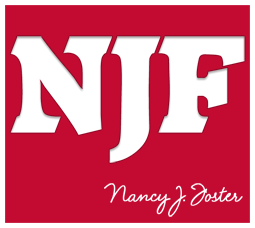Design Philosophy
 It would be difficult to sum up my design philosophy in a single phrase, but if I had to, it would be: Cleanly, simply, and effectively communicate the message. This applies whether I’m designing a logo, a website, a newsletter, an ad, you name it.
It would be difficult to sum up my design philosophy in a single phrase, but if I had to, it would be: Cleanly, simply, and effectively communicate the message. This applies whether I’m designing a logo, a website, a newsletter, an ad, you name it.
Everything we do or create communicates something. What we’re communicating is up to us. Here’s an example: Look at how you dress. If your clothing is clean, well cared for, and properly coordinating, that’s says something about you as a person. The opposite is also true; go out in dirty clothes with frayed edges and holes and you’re communicating something about yourself as well, and it’s not necessarily a positive image. So whenever I create something for a client, my first thought is about what it’s communicating and is that the right message. All the aspects, from type choice to layout to graphics contribute to that communication. Here are some other design maxims I strive to follow.
Know your market
You can create a terrific piece, but if it’s not targeted to the correct market, it won’t be as effective. For example, let’s say your client sells a health food product. Having an overweight, beer-guzzling spokesperson isn’t going to work well. Is the target market senior citizens? A rap soundtrack is going to miss the mark.
Assume the viewpoint
An adjunct to knowing your market is the ability to assume the viewpoint of others, particularly those in the target market. I specialize in working with small businesses who don’t have the budget to conduct extensive surveys and focus groups before they decide on a marketing campaign. Instead, they rely on my ability to assume the viewpoint of their target market so I can come up with something that will effectively communicate their message.
White space is your friend
I mention the importance of white space in my post on Layout. I’ve lost count of how many clients I’ve worked with who resisted white space. So many suffer from the desire to fill every square inch with information. I understand the impulse, but trust me, you greatly reduce the effectiveness of your piece — be it an ad, a newsletter, a website, whatever — if you try to squeeze in too much.
Contrast is good
Using contrast is a great way to grab attention, but there are many ways of achieving contrast. For instance, you could use contrasting color — a light color with a dark one. You could use contrasting typefaces — a heavy face versus a light one, an expanded face versus a condensed one, or a serif versus a sans serif. When creating a marketing piece, look at how you can introduce contrast. Just be sure things still coordinate. Contrast purely for the sake of contrast isn’t necessarily the right way to go.
Dare to be different
This maxim goes along with the one on contrast. When everything looks the same, nothing stands out. I related a story in my post on Effective Advertising that offers a great example of how this could be done. In a text-heavy publication, make your ad almost all white space. As the reader is flipping through the pages, he can’t help but stop and look at the nearly blank page. Think back to the days of Yellow Pages advertising. Those large display ads, or the smaller ads with a touch of color get attention first in a sea of small black text. But you need to be careful with this one, too. Sometimes being different can backfire on you. For instance, if you’re designing a logo for a women’s perfume, don’t use a chunky face that looks like it belongs on a football jersey. Remember the “know your market” maxim.
Stay consistent
Consistency applies in a number of ways. For instance, one of the reasons a company needs a logo is so they have a consistent image that represents them across all their marketing — be it stationery, packaging, uniforms, signage, etc. Consistency can also apply to the feeling of marketing pieces. For instance, maybe they share a similar layout or typeface combination. Another example covers something you may not be familiar with, but I’ll mention it anyway. I’m married to a Linux guru, so we have numerous O’Reilly computer books around. They each have a beautiful, black and white illustration of an animal or insect on the two-color cover. While the critter may have nothing to do with the subject, O’Reilly has built a consistent image with these illustrations. You also want consistency between your various marketing platforms. In other words, be sure your website nicely coordinates with your office stationery, company brochures, etc.
A little goes a long way
Another battle I sometimes fight with clients involves their tendency to overly emphasize things. No, you really shouldn’t do a bunch of “all caps” text. A little is fine, but remember that it’s harder for the eye to read all uppercase text. Our eyes are trained to recognize words by their shape, created by the various ascenders, descenders and x-height of lowercase type. Doing all uppercase defeats that process. The use of bold and/or italics are the proper ways to emphasize text, but do so in moderation. The more you use them, the less emphasis they provide. Avoid long passages of italics or script typefaces. They can be a bit hard to read as well. And please don’t underline text. Unless it’s a hyperlink on a web page, underlining should go the way of double-spacing after a period (both are holdovers from the days of typewriters).
